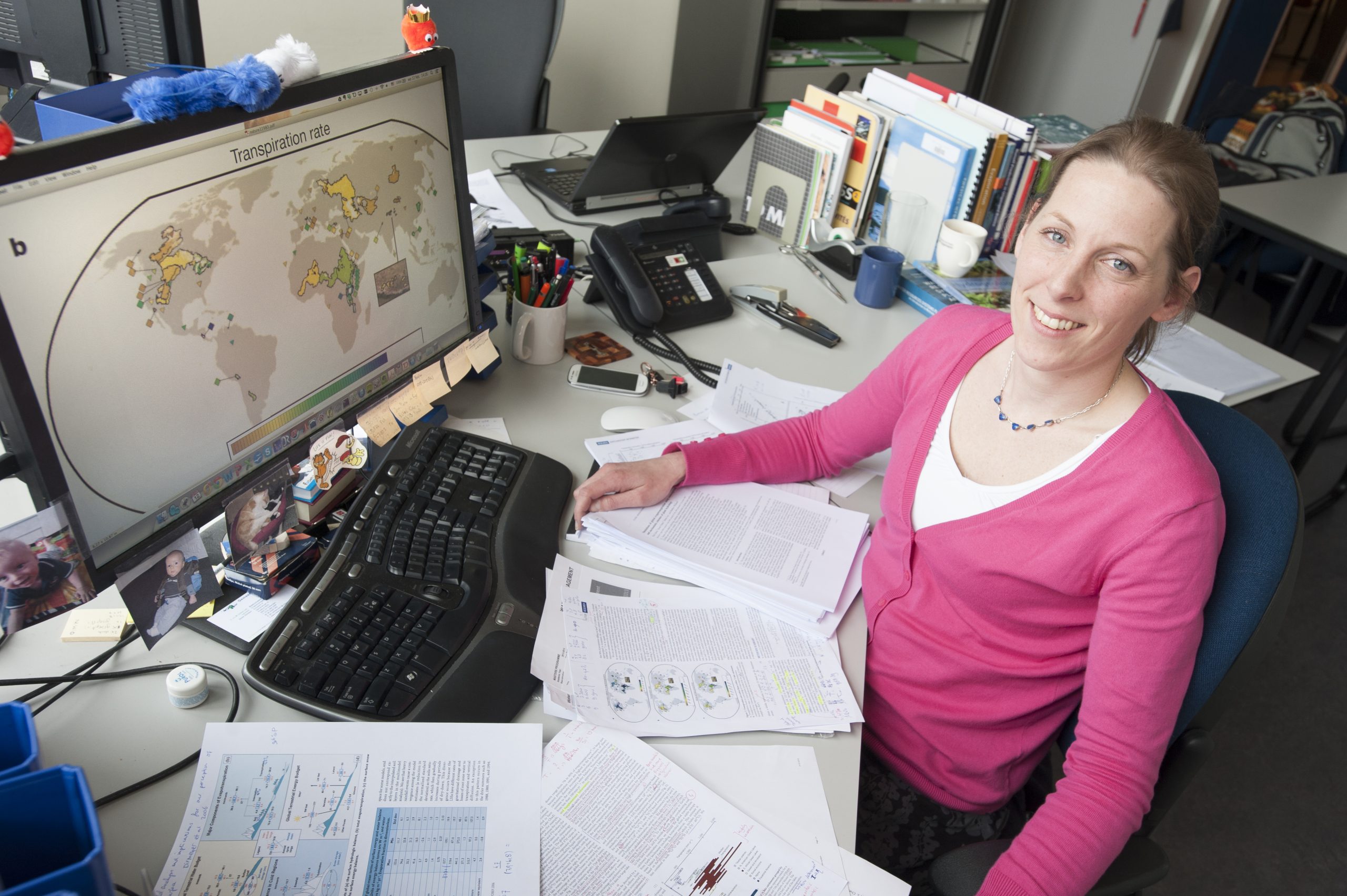After a year of correspondence, Miriam Coenders’ article was finally published in Nature this week. It explains why an earlier Nature publication on global water balance is incorrect.
Her room is at the end of a long corridor in the building for Civil Engineering and Geosciences. The desk is covered with papers. There’s the original article by Scott Jasechko MSc, a PhD student at the University of New Mexico, dated 18 April 2013 with which it all began. It’s titled Terrestrial water fluxes dominated by transpiration.
Then there are three commentaries on the article written by Dr Miriam Coenders, Professor Huub Savenije (CEGS) and colleagues called Uncertainties in transpiration estimates. Nature editors have forwarded these to Jasechko, who in turn has written three reactions, which are on the desk as well. The final version of Coenders’ reaction to Jasechko’s article was published on February 12th 2014, almost a year after the original. That’s how slow science sometimes progresses.
“My alarm bells went off at the introduction”, Coenders explains. And she points at the figure ‘80-90 percent’. Jasechko asserts that 80-90 percent of the water that evaporates from land, comes from plants. That was far larger than the reigning estimates at the time (20-65 percent) and also the main finding of the article. Coenders didn’t buy the figure and dived into the article to find where it was based upon.
“Their high estimate has two reasons”, she tells. First there has been selective use of data, also called cherry picking. And also uncertainties in data have not been properly processed. Instead of 80-90 percent, as proposed by Jasechko, Coenders and colleagues arrive at 35-80 percent.


We’ll spare you the details of the scientific discourse, but the argument is all about water balance. It states that water input of an area equals what goes out. Input (I) consists of rain and incoming rivers. Outgoing water is the sum of outgoing rivers and water draining into the soil (Q); evaporation from soil and open water (E); water evaporating through plants (transpiration or ‘T’) and lastly the rain that evaporates before it hits the ground (xP).
The main question here is the relative amount of ‘transpiration’ or T in the water cycle in comparison with evaporation from soil and open water (called ‘E’). This is an interesting figure since on a global scale it links CO2 and water cycles. And the global water cycle is what Jasechko’s article is about
Coenders however does not agree with the figures Jasechko has selected for the run-off (Q) and the interception (evaporated rain) xP. With the new figures she presents, the transpiration arrives at between 50-80 percent of total evaporation (instead of 80-90).
Next, she argues the uncertainties in the data that Jascheko has used to calculate the transpiration are much bigger than he assumes. This applies in particular to the isotope studies. The basis of these studies is that transpiration keeps the ratio between oxygen isotopes O-16 and O-18 in water unchanged, but that evaporation favours the lighter isotopes and thus enriches the residues with the heavier isotope. Jasechko applied a lab-derived equation on evaporation to determine the effect and extrapolated his findings into global estimates.
Coenders comments that “although isotopes may be useful for partitioning evaporation on a small scale, results at the larger scale are highly sensitive to the input data and their related uncertainties.”
She shows that errors propagate throughout Jascheko’s calculations but settles with doubling the uncertainty in isotopic composition of evaporation. This has a dramatic impact on the outcome for the transpiration, which now stands between 35-80 percent. Improved observation techniques are needed to reduce the margins, Coenders remarks.
Over the last year, the correspondence has cost her about three weeks time. Coenders wanted to correct something she read and felt couldn’t be true. The bare fact something has been published in an established peer-reviewed magazine does not necessarily make it true. But it will require some serious effort to set it straight.
A.M.J. Coenders-Gerrits et. al. Uncertainties in transpiration estimates, Nature 506 , 12 February 2014.



Comments are closed.